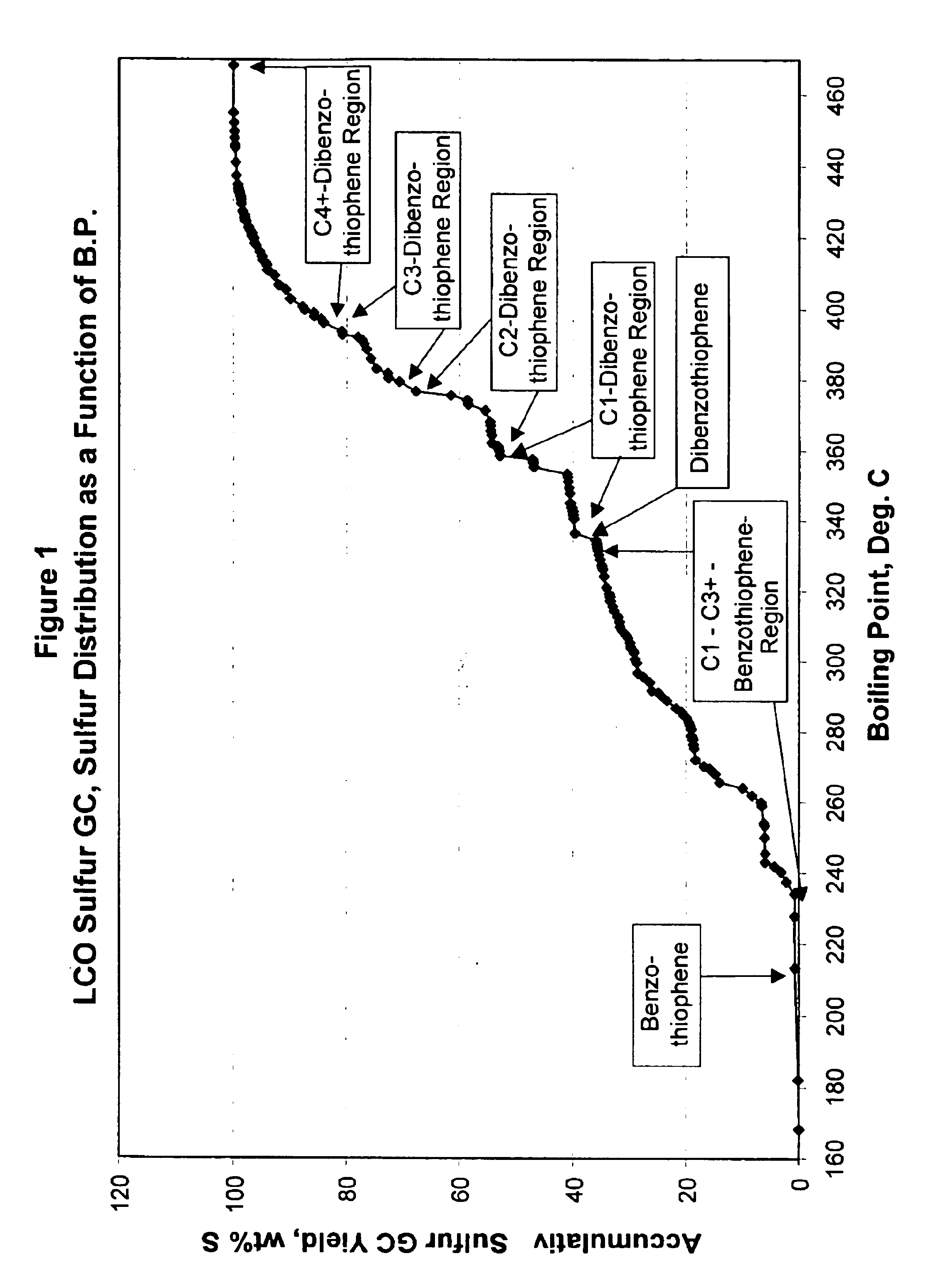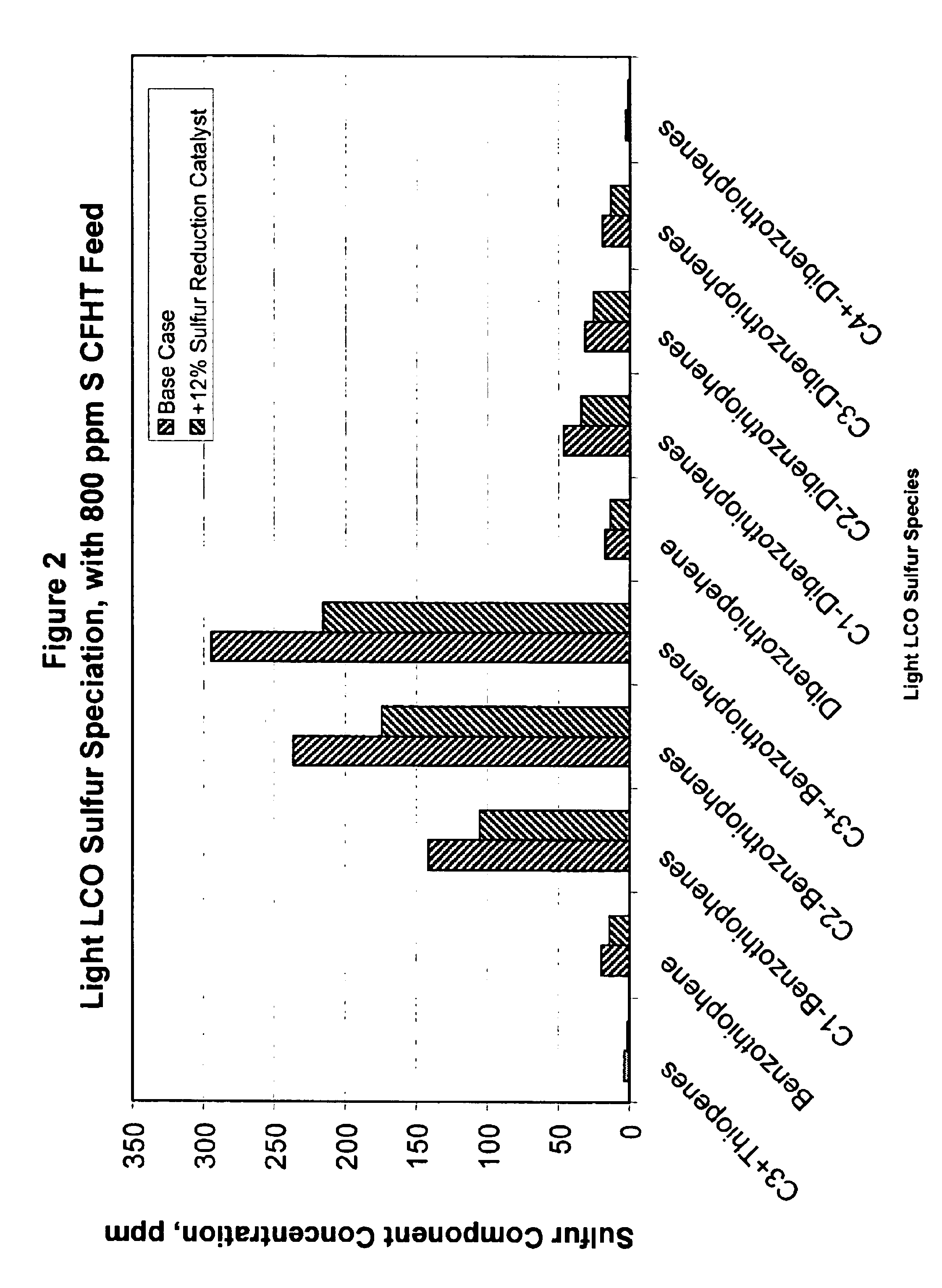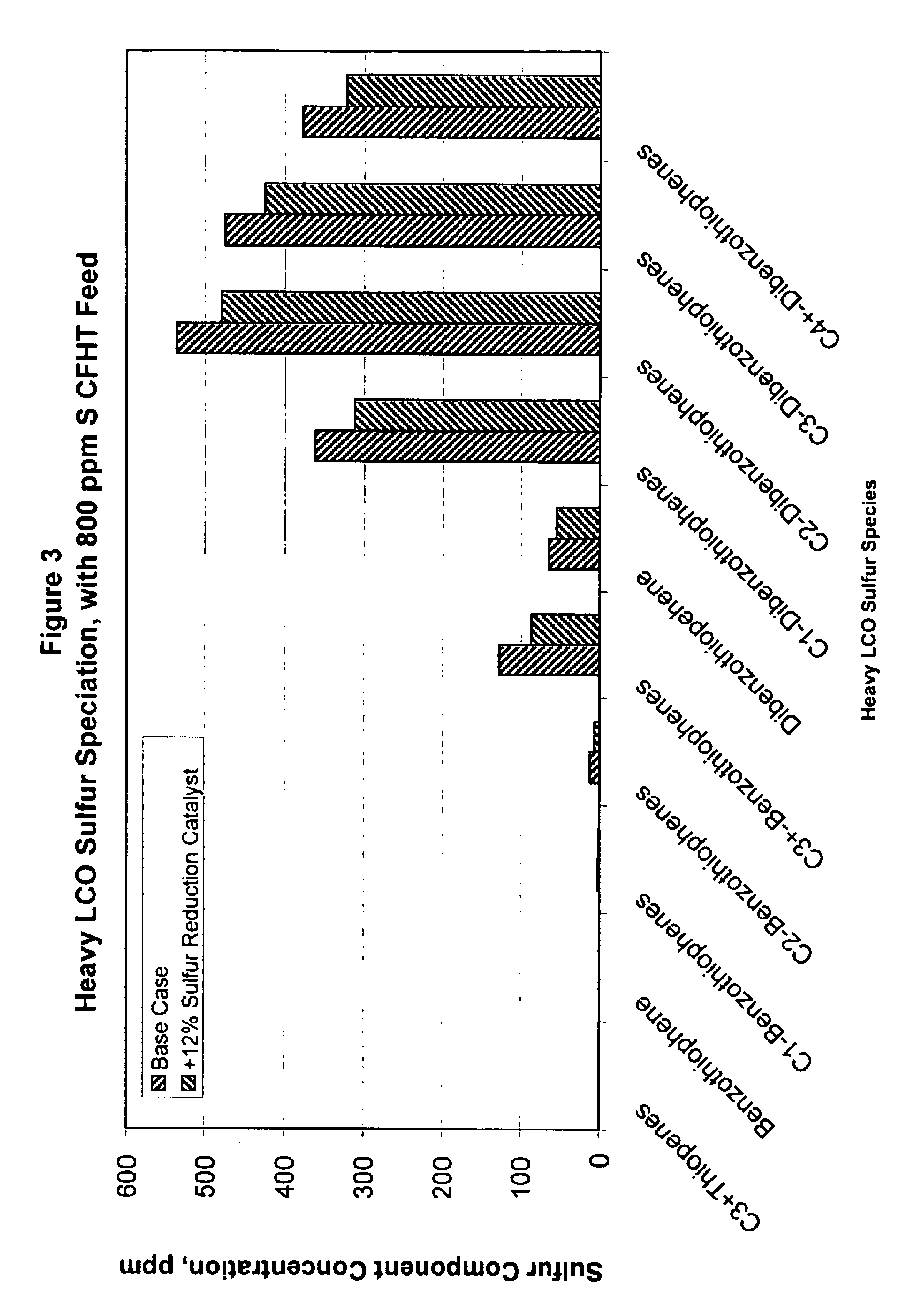Gasoline sulfur reduction in fluid catalytic cracking
a gasoline sulfur and fluid catalytic cracking technology, applied in the field of sulfur reduction, can solve the problems of reducing the sulfur content of the liquid fraction, not being able to desulfurize, and being expensive in terms of equipment and operational costs, and achieving the effect of improving the sulfur content, enhancing the stability of the catalyst, and increasing the sulfur reduction activity
- Summary
- Abstract
- Description
- Claims
- Application Information
AI Technical Summary
Benefits of technology
Problems solved by technology
Method used
Image
Examples
example 1
Preparation of Catalyst Series 1
[0057]A V / USY catalyst, Catalyst A, was prepared using a commercial H-form USY (crystal) with a bulk silica-to-alumina ratio of 5.4 and 2.435 nm unit cell size. A fluid catalyst was prepared by spray drying aqueous slurry containing 40 wt % of the USY crystals, 25 wt % silica, 5 wt % alumina, and 30 wt % kaolin clay. The spray-dried catalyst was calcined at 540° C. (1000° F.) for 3 hours. The resulting H-form USY catalyst was impregnated with a vanadium oxalate solution to target 0.4 wt % V by incipient wetness impregnation. The impregnated V / USY catalyst was further air calcined at 540° C. (1000° F.) for 3 hours. The final catalyst contains 0.39% V.
[0058]A Ce+V / USY catalyst, Catalyst B, was prepared from the same, spray-dried H-form USY catalyst intermediate as Catalyst A. The H-form USY catalyst was impregnated with a solution of Ce(NO3)3 to target 1.5 wt % Ce loading using an incipient wetness impregnation method. Resulting Ce / USY catalyst was air ...
example 2
Preparation of Catalyst Series 2
[0060]All samples in Catalyst Series 2 were prepared from a single source of spray dried material, consisting of 50% USY, 21% silica sol and 29% clay. The starting USY had a bulk silica-to-alumina ratio of 5.4 and 2.435 nm unit cell size. The spray dried catalyst was slurried with a solution of (NH4)2SO4 and NH4OH at pH of 6 to remove Na+, followed by washing with water and air calcination at 650° C. (1200° F.) for 2 hours.
[0061]A V / USY catalyst, Catalyst C, was prepared using the above H-form USY catalyst. The H-form USY catalyst was impregnated with a vanadium oxalate solution to target 0.5 wt % V by incipient wetness impregnation. The impregnated V / USY catalyst was further air calcined at 650° C. (1200° F.) for 2 hours. The final catalyst contains 0.53% V.
[0062]A Ce+V / USY catalyst, Catalyst D, was prepared from the above H-form USY catalyst. The H-form USY catalyst was exchanged with a solution of CeCl3 to target 0.75 wt % Ce loading. Resulting Ce / ...
example 3
Preparation of Catalyst Series 3
[0067]All samples in Catalyst Series 3 were prepared from a single source of spray dried material, consisting of 40% USY, 30% colloidal silica sol, and 30% clay. The starting H-form USY had a bulk silica-to-alumina ratio of 5.4 and 2.435 nm unit cell size. The spray-dried catalyst was air calcined at 540° C. (1000° F.) for 3 hours.
[0068]A Ce / USY catalyst, Catalyst G, was prepared using the above H-form USY catalyst. The H-form USY catalyst was impregnated with a solution of Ce(NO3)3 to target 1.5 wt % Ce loading using an incipient wetness impregnation method. Resulting Ce / USY catalyst was air calcined at 540° C. (1000° F.) followed by steaming at 540° C. (1000° F.) for 3 hours.
[0069]A Ce+V / USY catalyst, Catalyst H, was prepared from Catalyst G. The Ce / USY catalyst was impregnated with a vanadium oxalate solution to target 0.5 wt % V by incipient wetness impregnation. The impregnated Ce+V / USY catalyst was dried and air calcined at 540° C. (1000° F.) fo...
PUM
| Property | Measurement | Unit |
|---|---|---|
| Length | aaaaa | aaaaa |
| Percent by mass | aaaaa | aaaaa |
| Percent by mass | aaaaa | aaaaa |
Abstract
Description
Claims
Application Information
 Login to View More
Login to View More - R&D
- Intellectual Property
- Life Sciences
- Materials
- Tech Scout
- Unparalleled Data Quality
- Higher Quality Content
- 60% Fewer Hallucinations
Browse by: Latest US Patents, China's latest patents, Technical Efficacy Thesaurus, Application Domain, Technology Topic, Popular Technical Reports.
© 2025 PatSnap. All rights reserved.Legal|Privacy policy|Modern Slavery Act Transparency Statement|Sitemap|About US| Contact US: help@patsnap.com



